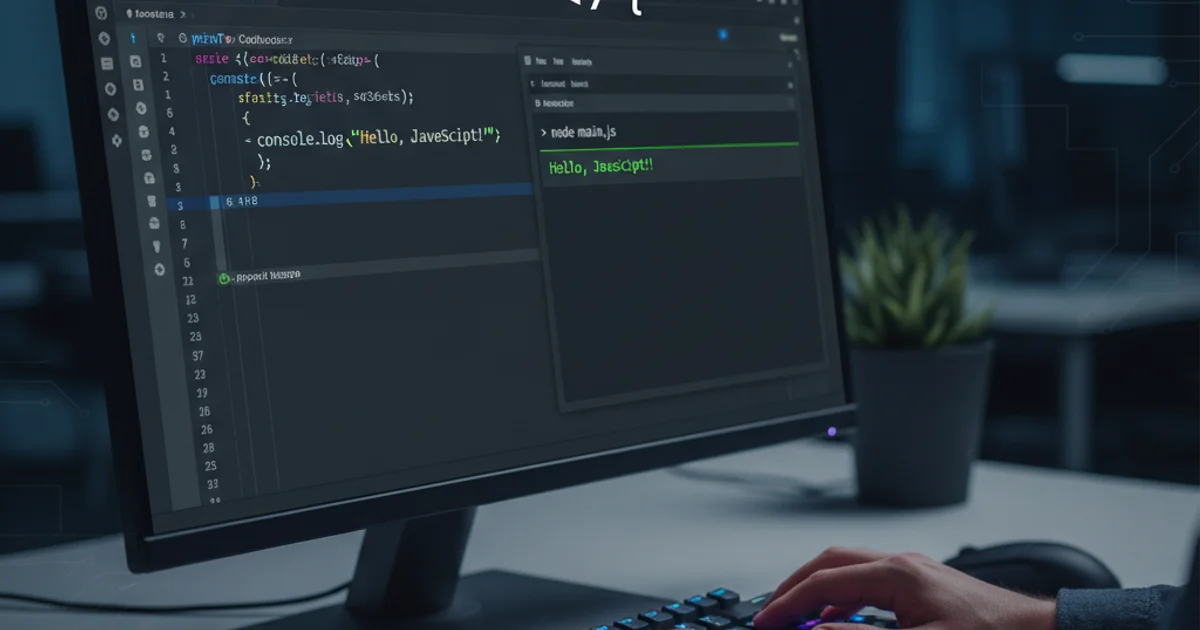How can I print to the console using JavaScript?
Categories:
Mastering Console Output in JavaScript

Learn the essential methods for printing messages, debugging information, and displaying data to the console in JavaScript, enhancing your development workflow.
Printing to the console is a fundamental skill for any JavaScript developer. It's your primary tool for debugging, understanding program flow, and inspecting variable values during execution. This article will guide you through the various console object methods available in JavaScript, from simple message logging to more advanced data presentation, and how they can be used effectively in environments like NetBeans.
The console.log() Method: Your Everyday Debugging Companion
The most frequently used method for console output is console.log(). It allows you to display one or more values to the console. You can pass strings, numbers, objects, arrays, and even multiple arguments, which console.log() will concatenate into a single output line, typically separated by spaces.
// Logging a simple string
console.log("Hello, JavaScript console!");
// Logging a variable's value
let userName = "Alice";
console.log("User name:", userName);
// Logging an object
let user = { id: 1, name: "Bob" };
console.log(user);
// Logging multiple values
let x = 10;
let y = 20;
console.log("The sum of", x, "and", y, "is", x + y);
Basic usage of console.log() for various data types.
console.log() often provides an interactive view in modern browser developer tools, allowing you to expand and inspect their properties.Specialized Console Methods for Enhanced Debugging
Beyond console.log(), the console object offers several other methods designed for specific debugging scenarios. These methods help categorize your output, making it easier to distinguish between different types of messages like errors, warnings, or informational notes.
flowchart TD
A[Start Debugging] --> B{What type of message?}
B -->|Informational| C[console.log()]
B -->|Warning| D[console.warn()]
B -->|Error| E[console.error()]
B -->|Debugging Info| F[console.debug()]
B -->|Table Data| G[console.table()]
B -->|Group Related Logs| H[console.group() / console.groupEnd()]
C --> I[End]
D --> I
E --> I
F --> I
G --> I
H --> IDecision flow for choosing the appropriate console method.
Here's a breakdown of some commonly used specialized methods:
// Displaying a warning message
console.warn("Warning: This function is deprecated.");
// Displaying an error message
try {
throw new Error("Something went wrong!");
} catch (e) {
console.error("Caught an error:", e.message);
}
// Displaying debug information (often hidden by default in some consoles)
console.debug("Debug: Variable 'counter' is now", counter);
// Displaying tabular data (great for arrays of objects)
const users = [
{ id: 1, name: "Alice", age: 30 },
{ id: 2, name: "Bob", age: 24 }
];
console.table(users);
// Grouping related console messages
console.group("User Profile");
console.log("Name: Jane Doe");
console.log("Email: jane.doe@example.com");
console.groupEnd();
Examples of console.warn(), console.error(), console.debug(), console.table(), and console.group().
Using Console Output in NetBeans
When developing JavaScript in NetBeans, especially for web projects, your console output will typically appear in the browser's developer console when you run or debug your application. For Node.js projects, the output will be visible directly in NetBeans's 'Output' window or the integrated terminal.
1. For Web Projects (Browser-based JavaScript)
Open your web project in NetBeans. Run or debug your project (e.g., by pressing F6 or clicking the 'Run' button). Once the browser opens, open its developer tools (usually by pressing F12 or right-clicking and selecting 'Inspect'). Navigate to the 'Console' tab to see your console.log() and other console messages.
2. For Node.js Projects
Open your Node.js project in NetBeans. Run your Node.js file (e.g., right-click the file and select 'Run File' or use the 'Run' menu). The output from your console.log() statements will appear directly in the 'Output' window at the bottom of the NetBeans IDE.